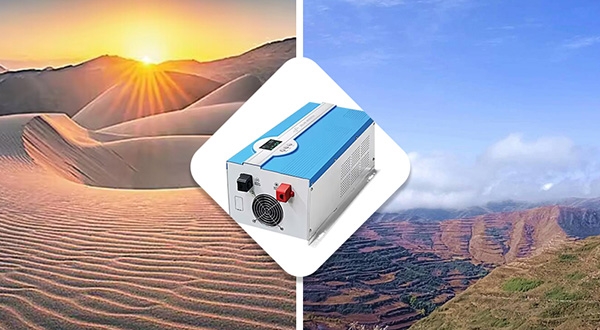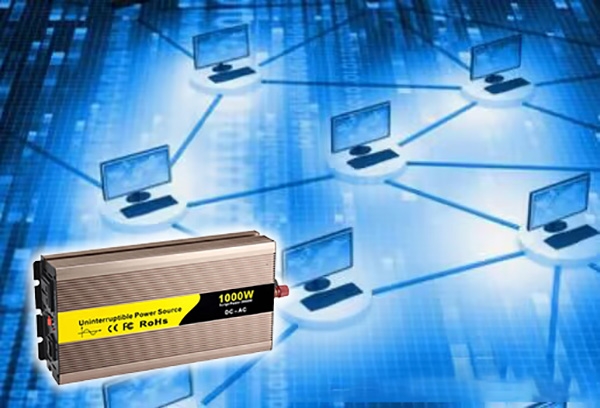UPS inverters and off-grid inverters are extremely important in their respective application fields. They each play an indispensable role and provide strong support for the stable operation and sustainable development of modern society. There are obvious differences between UPS inverters and off-grid inverters in many aspects. These differences are mainly reflected in their functions, working methods, battery charging capabilities, switching speeds, application scenarios, and the types of energy they rely on.
Definition and function
UPS inverter
UPS inverter is a power supply device that is mainly used to provide stable power output in the event of power outages or voltage fluctuations to ensure the normal operation of the equipment. When the mains power is normal, the UPS inverter stabilizes the mains power and supplies it to the load for use, and at the same time charges the battery inside the machine. When the mains power is interrupted, the UPS inverter immediately uses the power of the battery inside the machine to continue to supply AC power to the load through the method of inversion conversion to ensure that the load maintains normal operation.
Off-grid inverter
Off-grid solar inverters are mainly used in off-grid solar power generation systems to convert DC power generated by distributed power sources such as solar panels into AC power for use by power supply loads. It can store excess power for emergency use, especially in areas without grid coverage or unstable grids.

How they work
UPS inverter
UPS inverter relies on mains power as its main energy source and automatically switches to battery power mode when mains power is interrupted. It has an energy storage function and can store excess power during peak power periods for emergency use.
Off-grid inverter
Off-grid inverter does not rely on mains power, but relies on renewable energy such as solar and wind power as its main energy source. It has an energy storage function and can store power when the sun is sufficient and supply power to the load when needed.
Application scenarios
UPS inverter
UPS inverters are widely used in network equipment such as servers, routers, switches, and key equipment such as electronic computers in industrial control equipment, medical equipment, finance, taxation, industry and commerce, etc. UPS inverters are mainly used in situations where stable and uninterrupted power supply is required. Ensure that key equipment can continue to operate when the mains power is interrupted or the voltage fluctuates to avoid data loss or equipment damage.
Off-grid inverter
Off-grid inverters are suitable for remote areas or scenarios where there is no access to the power grid, such as mountainous areas, deserts, seabirds, etc. It can also be used as a backup power supply to deal with sudden power outages or disasters. Off-grid inverters are mainly used in areas where there is no access to the power grid or the power grid is unstable, converting direct current (such as electricity generated by solar panels, wind turbines, etc.) into alternating current for use by power supply loads.

Battery charging capacity
UPS inverters
Usually come with an integrated charger to keep the battery charged when the grid power is available. When the grid fails, the ups inverter automatically switches to battery mode and provides AC power. Once the power is restored, it switches back to the grid power and charges the battery.
Off-grid inverters
Usually have a built-in solar charge controller to manage the solar input (for solar-powered systems). Some models can also be used in conjunction with a generator input, but they usually do not support charging from the grid as they are designed for areas without grid access.
Switching speed
UPS inverter
Switches almost instantly, usually within milliseconds, to prevent interference with sensitive equipment. This fast response is critical for electronic devices that cannot handle even brief power interruptions.
Off-grid inverter
Does not require fast switching, as it continuously supplies power independent of the grid. In an off-grid setup, switching is not as critical, as all power is typically sourced from battery storage or renewable energy sources.
Power capacity and duration
UPS inverter
Typically designed for short-term power backup, enough to handle brief power outages or allow for a controlled shutdown of equipment. It typically has lower battery capacity than an off-grid system.
Off-grid inverter
Designed for long-term power supply, it is usually paired with larger battery banks and solar panels. This setup allows for a continuous, extended power supply, making it suitable for locations that rely entirely on solar, wind, or other renewable energy sources.
Connection to the grid
UPS inverter
Needs to be connected to the grid to work properly, as it relies on grid power to charge its batteries.
Off-grid inverter
Does not require a connection to the grid. It is self-contained and operates independently of any external power source.
Cost and complexity
UPS inverter
Typically lower cost and simpler in design, as it is only used for short-term backup. It is often a more compact and affordable solution for urban areas with relatively stable power supply.
Off-grid inverter
Typically more expensive, as it is capable of handling larger power loads, longer backup times, and integration with renewable energy sources. These systems are more complex and often require multiple components, such as charge controllers and larger battery banks.
